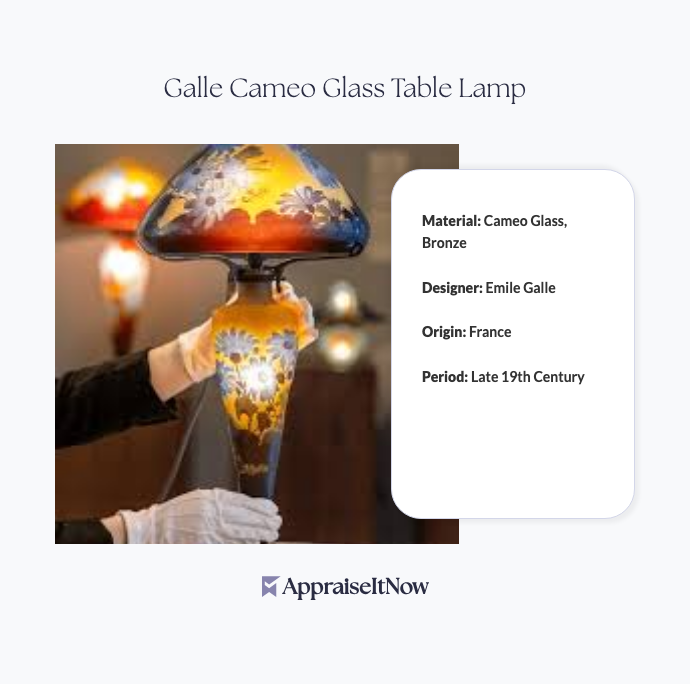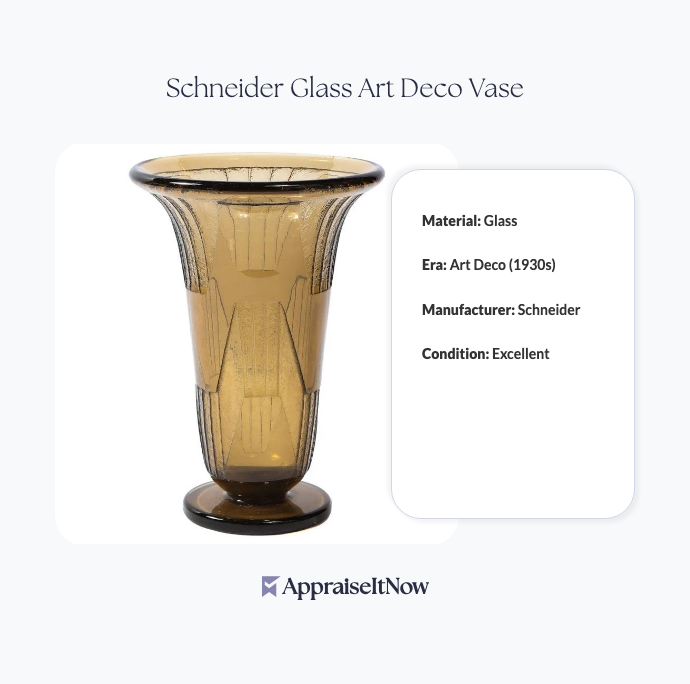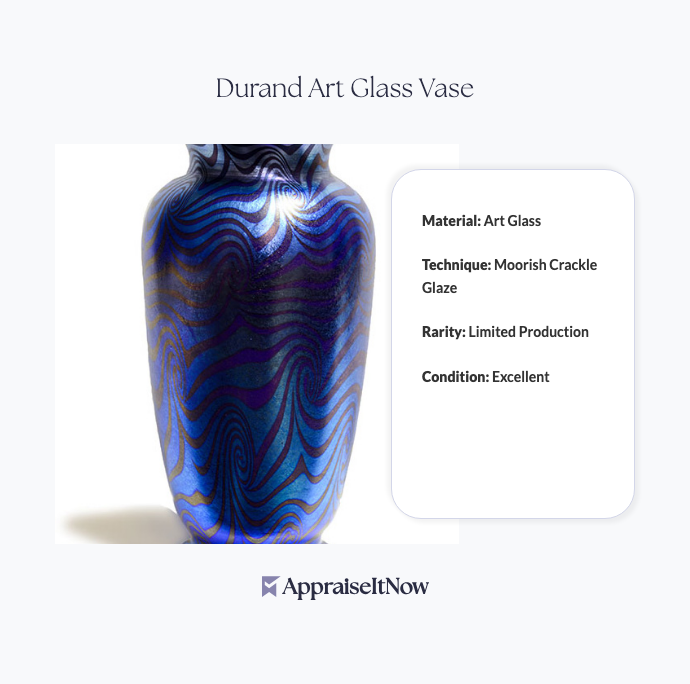<h1>How to Get Your Galle Cameo Glass Table Lamp Appraised</h1>
<p>If you own a Galle Cameo Glass Table Lamp, you're holding one of the most prized pieces of French art glass ever created. Whether you're curious about its value, planning to sell, or seeking insurance documentation, understanding how to get your lamp professionally appraised is essential. With estimated values ranging from <strong>$10,000 to $15,000</strong> for fine examples, proper appraisal ensures you know exactly what you have.</p>
<h2>Understanding What Makes Your Galle Lamp Valuable</h2>
<p>The Galle Cameo Glass Table Lamp stands as a masterpiece of late 19th-century design, created by renowned French glass manufacturer <strong>Émile Gallé</strong> beginning in 1885. What you own isn't simply a functional light fixture—it's a work of art combining multiple specialized techniques into a single, breathtaking object.</p>
<p>Your lamp's value stems from several interconnected factors. The cameo glass technique, which involves layering multiple colors of glass and hand-carving intricate designs to reveal the layers beneath, required exceptional skill and labor-intensive craftsmanship. Each shade was individually carved with botanical motifs, typically featuring delicate floral or nature-inspired patterns that showcase the artisan's mastery. The bronze base adds both structural elegance and material value, while the complete, original condition of your piece dramatically affects its market worth. Understanding these elements helps you communicate effectively with professional appraisers and recognize why your Galle lamp commands such significant value compared to ordinary decorative lighting.</p>
<div class="callout tip"><p><strong>Authentication Insight</strong></p>
<p>Original Galle lamps bear the artist's signature—typically "Gallé" etched into the glass—which professional appraisers verify as a primary authentication marker.</p></div>
<h2>How to Tell If Your Galle Lamp Is Authentic</h2>
<p>Before seeking appraisal, understanding whether your lamp is genuinely by Gallé or a later reproduction matters considerably. The question of authenticity isn't academic—it's the difference between a $10,000+ masterpiece and a reproduction worth a fraction of that amount. </p>
<p>Start by examining the signature. Authentic Gallé pieces feature the artist's name etched directly into the glass itself, typically on the lower portion of the shade. The signature should appear hand-carved rather than printed, with slight variations in depth that reflect manual application. Contemporary reproductions often attempt signatures, but skilled appraisers can distinguish genuine etchings from modern imitations through magnification and light examination.</p>
<p>The glass itself tells a story. Gallé used specific color combinations and layering techniques that are difficult to replicate exactly. Authentic lamps typically feature two to four distinct glass layers in complementary colors—perhaps amber and burgundy, or green and pale yellow—with the carving revealing these layers in artistic depth. The surface should show minute variations in thickness and color intensity that reflect hand-carving rather than the uniformity of mechanical production.</p>
<p>Examine the bronze base carefully. Legitimate Gallé lamps feature bronzework that integrates seamlessly with the glass, typically showing proper patina for age. The base should bear maker's marks or foundry signatures consistent with late 19th-century French bronzeworking. The mechanics of the lamp—the socket, wiring, and overall construction—should align with period standards if the piece is authentic.</p>
<div class="callout note"><p><strong>Critical Detail</strong></p>
<p>Production records confirm Gallé created only approximately <strong>500 pieces</strong> of cameo glass table lamps worldwide, making authentic examples exceptionally rare and valuable.</p></div>
<h2>Gathering Documentation Before Your Appraisal</h2>
<p>Professional appraisers need context to accurately value your Galle lamp. Gather whatever documentation or information you possess, even if it seems minor. Your lamp's provenance—its ownership history and how it came into your possession—directly influences its appraisal value. Do you have original sales receipts, auction documentation, or family records indicating how long your family has owned the piece? These details strengthen authentication and valuation credibility.</p>
<p>Photograph your lamp thoroughly from multiple angles in natural light. Include close-up images of the signature, any maker's marks on the bronze base, the overall form, and details of the carved design. For professional appraisers working with items like <a href="/types/artwork">fine artwork</a> and <a href="/types/antiques">antiques</a>, clear photography becomes invaluable when cross-referencing your specific example against known Gallé pieces in museum collections or auction house records.</p>
<p>If you know the lamp's acquisition date, seller information, or any previous appraisals, compile these details. Even family stories about the lamp's history—where a relative purchased it, when, under what circumstances—provide valuable context. This documentation distinguishes your lamp from similar pieces and establishes its individual narrative within Gallé's broader body of work.</p>
<h2>Why Professional Appraisal Matters for Art Glass</h2>
<p>Determining value for decorative arts like Galle cameo glass requires specialized expertise beyond general antiques knowledge. Art glass valuation involves understanding period production techniques, historical significance, material composition, condition assessment, and current <a href="/blog/appraising-fine-glass-and-crystal-valuing-delicate-glassware-and-artistic-creations">market dynamics for fine collectibles</a>.</p>
<p>Your lamp represents a convergence of artistic vision and technical mastery. Appraising it requires evaluators who understand late 19th-century French design movements, recognize the significance of Gallé's innovations in glass technique, and can assess condition in ways that properly value aging. A general antiques appraiser might undervalue your piece by tens of thousands of dollars simply through inexperience with fine art glass. Conversely, a specialist in <a href="/types/antique-artwork">antique artwork</a> understands exactly what collectors seek and how market demand affects pricing.</p>
<p>Professional appraisers also address the crucial question many collectors ask: <em>Are Gallé's works valuable?</em> The definitive answer is yes, with significant market recognition. Galle cameo glass appears regularly in major auction houses, with pieces consistently selling for substantial premiums. A 1900 Galle table lamp with exceptional carving and perfect condition recently achieved <strong>$18,500</strong> at Sotheby's, while another realized <strong>$14,625</strong> at Christie's. These verified sales provide the comparable market data that professional appraisers use to establish your specific lamp's value.</p>
<div class="callout tip"><p><strong>Market Reality</strong></p>
<p>Genuine Gallé cameo glass lamps rarely appear in local antique shops or roadside fairs—they belong in specialized galleries and major auction houses, reflecting their status as serious collectibles.</p></div>
<h2>Assessing Your Lamp's Condition and Its Impact on Value</h2>
<p>Condition profoundly affects your lamp's appraisal value. Is your shade intact, or has it sustained chips, cracks, or losses? Has the bronze base experienced significant damage or restoration? Understanding these details helps appraisers assign realistic values within the $10,000-$15,000 range.</p>
<p>A lamp in excellent condition with original, undamaged glass and patinated bronze base commands top-tier pricing. Even minor imperfections—a small chip in the glass edge, a minor dent in the bronze—can reduce value by 10-20%. More significant damage, such as major cracks in the shade requiring restoration, might push values toward the lower end of the spectrum or below, depending on severity.</p>
<p>The question collectors frequently ask is <em>How do I know if my lamp is worth money?</em> The answer combines authenticity verification, condition assessment, and market research. A genuine Gallé lamp in good condition is virtually always worth significant money. However, the specific amount depends on individual condition factors, provenance strength, and current collector demand for similar pieces.</p>
<p>Condition assessment requires careful evaluation during the appraisal process. Does the lamp function electrically? Have previous repairs affected its integrity? Appraisers examine even minute details—the evenness of the carving depth, any signs of restoration to chips or cracks, the patina consistency on bronze components. These factors collectively determine whether your lamp represents a standard example or a particularly fine specimen worthy of premium valuation.</p>
<h2>Finding Qualified Appraisers for Your Galle Lamp</h2>
<p>Selecting the right appraiser is critical to obtaining an accurate, credible valuation. You want an expert who understands Gallé specifically, has experience appraising similar pieces, and can provide <a href="/blog/appraising-antiques-unveiling-the-hidden-treasures-in-your-collection">USPAP-compliant documentation</a> acceptable to insurance companies, courts, and auction houses.</p>
<p>Look for appraisers with formal credentials through recognized organizations. The <strong>American Society of Appraisers (ASA)</strong>, <strong>International Society of Appraisers (ISA)</strong>, and <strong>American Association of Appraisals (AAA)</strong> maintain standards ensuring members follow ethical guidelines and professional practices. Many qualified appraisers specialize in decorative arts, fine glass, or <a href="/types/memorabilia-and-collectibles">memorabilia and collectibles</a>, giving them the specific expertise your Galle lamp deserves.</p>
<p>When evaluating potential appraisers, ask directly about their experience with Gallé glass and art glass from the Art Nouveau period. Have they previously appraised similar lamps? Can they provide references from satisfied clients? A qualified appraiser should be willing to discuss their methodology, discuss comparable recent sales they've researched, and explain how they arrived at their valuation.</p>
<p>AppraiseItNow connects you with certified appraisers across the United States who specialize in <a href="/types/antique-furniture">antique furniture</a> and decorative arts. Our network includes experts with credentials through AAA, ISA, ASA, CAGA, and AMEA—all committed to providing accurate, defensible valuations. You submit photographs and descriptions securely online, and our specialists provide detailed, professional appraisals suitable for insurance, sale, or estate planning purposes.</p>
<h2>The Appraisal Timeline and What to Expect</h2>
<p>The appraisal process for your Galle lamp typically follows a straightforward timeline. If you're working with a service like <strong>AppraiseItNow</strong>, you begin by submitting high-quality photographs and a detailed written description of your lamp. Include information about the signature, condition specifics, any repairs or restoration work, and your lamp's provenance if known. This documentation allows appraisers to conduct preliminary research and assess your specific piece's characteristics.</p>
<p>Your appraiser will research comparable sales, examining auction house records and dealer listings for similar Gallé cameo glass lamps. This market analysis establishes the realistic price range in which your lamp belongs. They'll also reference museum documentation and scholarly sources on Gallé's production techniques, design evolution, and artistic significance. All this research informs the final valuation, ensuring it reflects current market conditions rather than arbitrary estimates.</p>
<p>The resulting appraisal report provides detailed documentation of your lamp's identification, condition assessment, valuation methodology, and the final appraised value. This professional document becomes essential whether you're seeking insurance coverage, planning an estate, selling at auction, or simply satisfying personal curiosity about your possession's worth.</p>
<h2>Using Your Appraisal for Insurance and Estate Planning</h2>
<p>Once you have a professional appraisal, several important next steps follow. For insurance purposes, provide your appraiser's documentation to your homeowner's or fine art insurance carrier. Most standard homeowners policies cap coverage for individual items, often inadequately protecting pieces valued at $10,000+. Specialized fine art or collectibles insurance policies use professional appraisals to establish agreed values, ensuring your Galle lamp is properly protected against loss, theft, or damage.</p>
<p>For estate planning, a certified appraisal provides clear documentation of your lamp's value for distribution purposes or tax considerations. Whether you're creating a will, establishing a trust, or planning charitable donations, professional valuations ensure fair and legal treatment of your assets. When exploring <a href="/blog/a-guide-to-professional-personal-property-appraisals">personal property appraisals</a>, understand that documented valuations protect both your interests and those of beneficiaries or recipients.</p>
<p>If you're considering selling your Galle lamp, professional appraisal evidence strengthens your negotiating position. Auction houses, galleries, and serious private buyers expect authentic pieces to be accompanied by expert documentation. Your appraisal report, combined with clear provenance information, helps potential buyers understand why your lamp commands its asking price.</p>
<h2>Market Trends and When to Appraise Your Lamp</h2>
<p>Art glass, particularly works by Gallé, has experienced strong market appreciation over the past two decades. As collectors increasingly recognize the significance of Art Nouveau design and the scarcity of authentic examples, values continue rising. This trend suggests that any Galle cameo glass lamp you own represents an appreciating asset worth documenting today.</p>
<p>The question <em>How much is a Galle?</em> varies by specific piece—a small vase might command $2,000-$5,000, while significant table lamps range from $10,000-$20,000. Factors affecting this spectrum include size, complexity of carving, color combinations, condition, and documentation quality. However, all genuine Gallé pieces command premium prices reflecting their status as collectible fine art.</p>
<p>Consider obtaining updated appraisals every five to ten years, particularly if you're relying on the valuation for insurance purposes. Market conditions shift, comparable sales change, and your lamp's condition may evolve. While properly stored Galle glass ages gracefully, regular appraisal updates ensure your insurance coverage and estate documentation remain current and accurate.</p>
<div class="callout note"><p><strong>Key Takeaway</strong></p>
<p>A professional appraisal of your Galle Cameo Glass Table Lamp provides essential documentation for insurance, estate planning, and sale purposes, while validating the true worth of this exceptional piece of French art glass. The $10,000-$15,000 value range reflects significant recognition in the collector's market, and proper appraisal documentation protects your investment for years to come.</p></div>







.avif)







